-
 Bitcoin
Bitcoin $83,447.0094
-0.09% -
 Ethereum
Ethereum $1,810.5657
-0.04% -
 Tether USDt
Tether USDt $0.9998
0.00% -
 XRP
XRP $2.1349
3.08% -
 BNB
BNB $594.8567
-0.39% -
 Solana
Solana $120.6345
2.81% -
 USDC
USDC $1.0000
0.00% -
 Dogecoin
Dogecoin $0.1691
2.34% -
 Cardano
Cardano $0.6564
-0.51% -
 TRON
TRON $0.2377
-0.30% -
 Chainlink
Chainlink $12.8707
-0.94% -
 UNUS SED LEO
UNUS SED LEO $8.8685
-5.57% -
 Toncoin
Toncoin $3.3027
-6.43% -
 Stellar
Stellar $0.2575
-1.56% -
 Avalanche
Avalanche $18.1766
-1.84% -
 Shiba Inu
Shiba Inu $0.0...01235
0.63% -
 Sui
Sui $2.2385
-0.04% -
 Hedera
Hedera $0.1625
-0.46% -
 Litecoin
Litecoin $84.1081
-0.37% -
 Polkadot
Polkadot $4.0132
-1.50% -
 MANTRA
MANTRA $6.2773
-0.95% -
 Bitcoin Cash
Bitcoin Cash $300.7798
-2.47% -
 Bitget Token
Bitget Token $4.5079
0.04% -
 Dai
Dai $1.0001
0.01% -
 Ethena USDe
Ethena USDe $0.9991
-0.04% -
 Pi
Pi $0.6420
17.26% -
 Monero
Monero $218.5166
1.39% -
 Hyperliquid
Hyperliquid $11.8381
1.01% -
 Uniswap
Uniswap $5.8908
-1.26% -
 OKB
OKB $51.1891
8.86%
How to participate in staking on OKX?
Staking on OKX allows crypto holders to earn rewards by locking assets, with options like fixed, flexible, and DeFi staking, each offering different risks and returns.
Apr 05, 2025 at 05:07 am
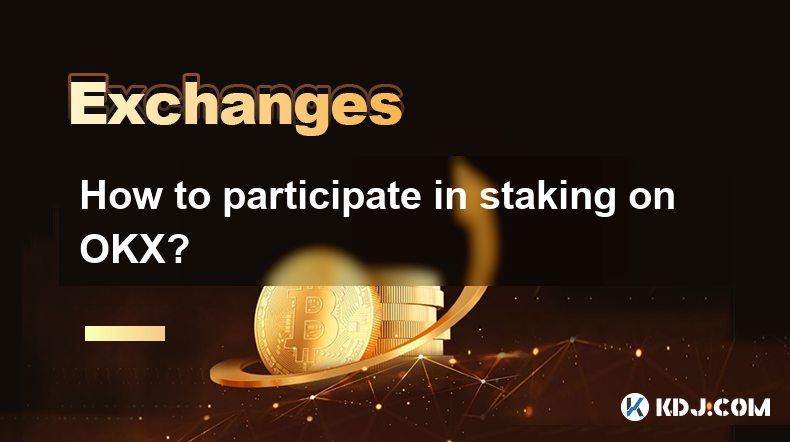
Participating in staking on OKX offers cryptocurrency holders an opportunity to earn rewards by locking up their assets for a period. Staking is integral to many blockchain networks that use proof-of-stake (PoS) or similar consensus mechanisms. OKX, a leading cryptocurrency exchange, facilitates staking for a variety of cryptocurrencies, making it easier for users to participate in network validation and earn passive income. To start staking on OKX, you'll need to follow a series of steps, understand the different staking options available, and be aware of the associated risks and rewards.
Getting Started with Staking on OKX
To begin staking on OKX, the first step is to create an account if you don't already have one. Visit the OKX website and click on the 'Sign Up' button. You'll need to provide your email address, set a strong password, and complete the verification process which includes submitting personal identification documents. Once your account is set up and verified, you can deposit funds into your OKX wallet. Navigate to the 'Funds' section, select 'Deposit', and choose the cryptocurrency you wish to stake. Follow the on-screen instructions to transfer your assets to your OKX wallet.
Exploring Staking Options on OKX
OKX offers several staking options, each with its own set of rules and reward structures. The main types of staking available on OKX include:
Fixed Staking: This option requires you to lock your assets for a fixed period, usually ranging from a few days to several months. In return, you receive a fixed annual percentage yield (APY). This type of staking is suitable for those who can commit to holding their assets for the entire duration.
Flexible Staking: With flexible staking, you can deposit and withdraw your assets at any time. While the APY is generally lower than fixed staking, it offers more liquidity. This option is ideal for those who want to earn staking rewards but may need to access their funds on short notice.
DeFi Staking: OKX also supports staking in decentralized finance (DeFi) protocols. This type of staking can offer higher yields but comes with increased risks due to the volatile nature of DeFi projects.
How to Stake Your Assets on OKX
Once you've selected the type of staking that suits your needs, follow these steps to stake your assets on OKX:
- Navigate to the 'Earn' section on the OKX platform.
- Select 'Staking' from the menu.
- Choose the cryptocurrency you want to stake and the type of staking (fixed, flexible, or DeFi).
- Enter the amount you wish to stake. Make sure you understand the minimum and maximum staking limits for the chosen asset.
- Review the terms and conditions, including the lock-up period and estimated rewards.
- Click 'Stake' to confirm your staking request. Your assets will be locked, and you'll start earning rewards based on the terms of your chosen staking option.
Understanding Staking Rewards and Risks
Staking on OKX can be a lucrative way to earn passive income, but it's important to understand the rewards and risks involved. The rewards from staking come in the form of additional cryptocurrency, which is typically distributed periodically based on the amount staked and the duration of the stake. For example, if you stake 100 ETH with an APY of 5%, you could earn 5 ETH over the course of a year. However, the actual rewards can vary due to factors like network performance and changes in staking policies.
On the flip side, staking also comes with risks. The primary risk is the potential for loss of staked assets due to slashing, which can occur if the validator node you're supporting fails to perform its duties correctly. Additionally, the value of the staked cryptocurrency can fluctuate, which means the value of your rewards could decrease if the market price drops. It's crucial to research the specific staking rules and risks associated with each cryptocurrency before participating.
Monitoring and Managing Your Staked Assets
Once you've staked your assets on OKX, it's important to monitor and manage them effectively. OKX provides a user-friendly dashboard where you can view your staked assets, track your rewards, and manage your staking positions. Here are some tips for managing your staked assets:
- Regularly check your staking dashboard to monitor your rewards and the performance of your staked assets.
- Keep an eye on the lock-up periods for your fixed staking positions to plan your financial strategy accordingly.
- Consider diversifying your staking portfolio across different cryptocurrencies and staking types to spread risk.
- Stay informed about any changes in staking policies or rewards structures that could affect your returns.
Withdrawing Your Staked Assets
When you're ready to withdraw your staked assets, the process varies depending on the type of staking you've chosen. For flexible staking, you can withdraw your assets at any time by navigating to the 'Earn' section, selecting 'Staking', and clicking 'Withdraw' next to the asset you want to unstake. The withdrawal process is usually instant, and your assets will be returned to your OKX wallet.
For fixed staking, you'll need to wait until the lock-up period ends before you can withdraw your assets. Once the period is over, you can follow the same steps as flexible staking to unstake your assets. Keep in mind that withdrawing before the lock-up period ends may result in penalties or forfeiture of rewards, so plan your withdrawals carefully.
Maximizing Your Staking Returns on OKX
To maximize your staking returns on OKX, consider the following strategies:
Diversify Your Staking Portfolio: By staking different cryptocurrencies, you can spread your risk and potentially increase your overall returns. Look for assets with high APYs and stable networks.
Stay Informed: Keep up-to-date with the latest news and developments in the cryptocurrencies you're staking. Changes in network performance or staking policies can impact your rewards.
Reinvest Your Rewards: Consider reinvesting your staking rewards to compound your earnings. This can significantly increase your returns over time, especially with fixed staking options.
Use OKX's Staking Calculator: OKX provides a staking calculator that can help you estimate your potential rewards based on different staking scenarios. Use this tool to plan your staking strategy and optimize your returns.
Common Questions About Staking on OKX
Q: What is the minimum amount required to start staking on OKX?
A: The minimum staking amount varies depending on the cryptocurrency and the type of staking. For example, some assets may require a minimum of 1 ETH for fixed staking, while others might have lower or higher thresholds. Always check the specific requirements for each asset on the OKX platform.
Q: How often are staking rewards distributed on OKX?
A: Staking rewards on OKX are typically distributed periodically, which can be daily, weekly, or monthly depending on the asset and staking type. Fixed staking rewards are usually distributed at the end of the lock-up period, while flexible staking rewards are credited more frequently.
Q: Can I lose my staked assets on OKX?
A: While staking on OKX is generally safe, there is a risk of losing staked assets due to slashing if the validator node you're supporting fails to perform correctly. Additionally, the value of your staked assets can fluctuate with market conditions, potentially resulting in a loss of value.
Q: How do I choose between fixed and flexible staking on OKX?
A: The choice between fixed and flexible staking depends on your financial goals and liquidity needs. Fixed staking offers higher APYs but requires you to lock your assets for a set period. Flexible staking provides more liquidity but typically has lower APYs. Consider your investment horizon and need for access to your funds when deciding.
Q: What happens if I need to withdraw my staked assets before the lock-up period ends?
A: Withdrawing staked assets before the lock-up period ends in fixed staking can result in penalties or forfeiture of rewards. It's important to plan your staking strategy carefully and only commit to fixed staking if you're sure you won't need to access your funds during the lock-up period.
Q: Are there any fees associated with staking on OKX?
A: OKX does not charge fees for staking, but you should be aware of any network fees associated with depositing and withdrawing your assets. Additionally, some DeFi staking options may have their own fee structures, so it's important to review the terms before participating.
Q: Can I stake multiple cryptocurrencies on OKX at the same time?
A: Yes, you can stake multiple cryptocurrencies on OKX simultaneously. This allows you to diversify your staking portfolio and potentially increase your overall returns. Just ensure you understand the staking rules and rewards for each asset.
Q: How can I track my staking rewards on OKX?
A: OKX provides a staking dashboard where you can view your staked assets, track your rewards, and manage your staking positions. You can access this dashboard by navigating to the 'Earn' section and selecting 'Staking'.
Q: What should I do if I encounter issues with staking on OKX?
A: If you encounter any issues with staking on OKX, you can reach out to their customer support team for assistance. OKX offers multiple support channels, including live chat, email, and a help center with detailed guides and FAQs.
Q: Is staking on OKX suitable for beginners?
A: Staking on OKX can be suitable for beginners, especially with the user-friendly interface and variety of staking options available. However, it's important for beginners to thoroughly research the assets they plan to stake and understand the associated risks and rewards before participating.
Disclaimer:info@kdj.com
The information provided is not trading advice. kdj.com does not assume any responsibility for any investments made based on the information provided in this article. Cryptocurrencies are highly volatile and it is highly recommended that you invest with caution after thorough research!
If you believe that the content used on this website infringes your copyright, please contact us immediately (info@kdj.com) and we will delete it promptly.
- Ethereum (ETH) price retreated on Wednesday, breaking a two-day winning streak
- 2025-04-05 16:20:12
- The Evolution of Index Investing: From Traditional Markets to Crypto
- 2025-04-05 16:20:12
- Ethereum (ETH) Flips Solana (SOL) in Key Network Metric, Signaling Possible Trend Reversal
- 2025-04-05 16:15:12
- Cryptocurrency Market Experiences Significant Pullback as Bitcoin (BTC) Price Recovers from $82K to Peak above $84K
- 2025-04-05 16:15:12
- Coinbase CEO Brian Armstrong Urges U.S. Lawmakers to Modernize Stablecoin Regulations
- 2025-04-05 16:10:12
- (CoinChapter.com) — XRP Price Prediction: Descending Triangle Pattern Pressures XRP Toward Breakdown
- 2025-04-05 16:10:12
Related knowledge
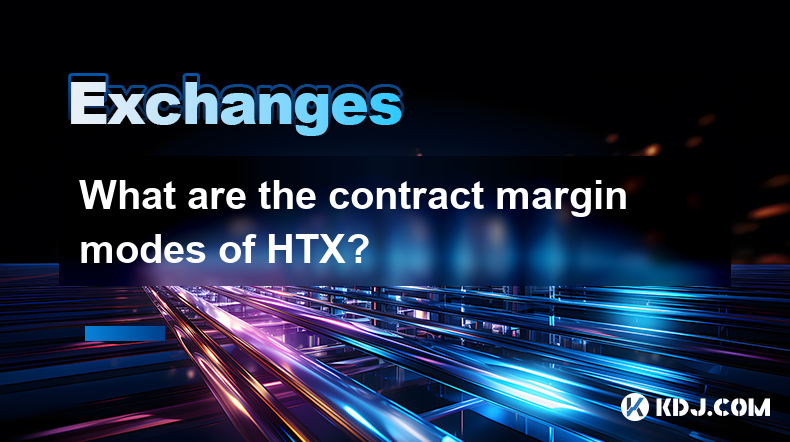
What are the contract margin modes of HTX?
Apr 04,2025 at 02:14pm
HTX, formerly known as Huobi, offers various contract margin modes to cater to the diverse needs of traders. Understanding these modes is crucial for effectively managing risk and maximizing potential returns. In this article, we will delve into the different contract margin modes available on HTX, explaining their features, benefits, and how to use the...
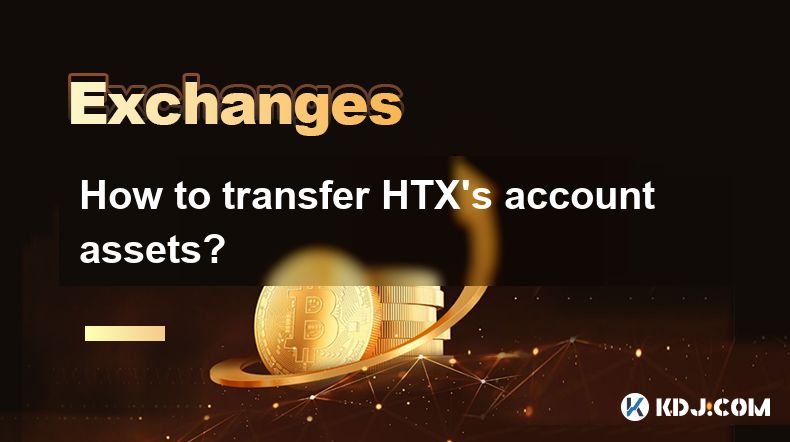
How to transfer HTX's account assets?
Apr 04,2025 at 09:28pm
Introduction to HTX and Account AssetsHTX, formerly known as Huobi, is a leading cryptocurrency exchange that offers a wide range of trading services. One of the essential functions for users is the ability to transfer assets within their HTX accounts. Whether you're moving funds between different wallets or sending assets to another user, understanding...
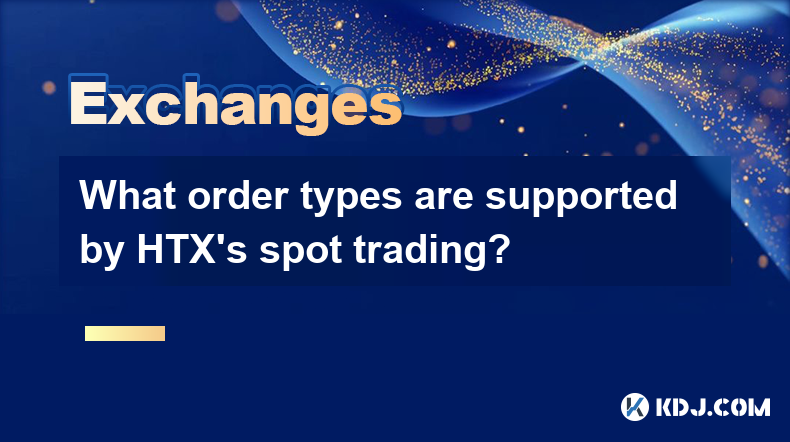
What order types are supported by HTX's spot trading?
Apr 04,2025 at 04:42am
HTX, formerly known as Huobi, is a well-established cryptocurrency exchange that offers a variety of order types for spot trading. Understanding these order types is crucial for traders looking to execute their strategies effectively. In this article, we will explore the different order types supported by HTX's spot trading platform, providing detailed ...

How to cancel HTX's stop-profit and stop-loss orders?
Apr 03,2025 at 07:50pm
Introduction to HTX's Stop-Profit and Stop-Loss OrdersHTX, formerly known as Huobi, is a leading cryptocurrency exchange that offers a variety of trading tools to its users. Among these tools are stop-profit and stop-loss orders, which are essential for managing risk and securing profits in the volatile crypto market. These orders allow traders to set p...
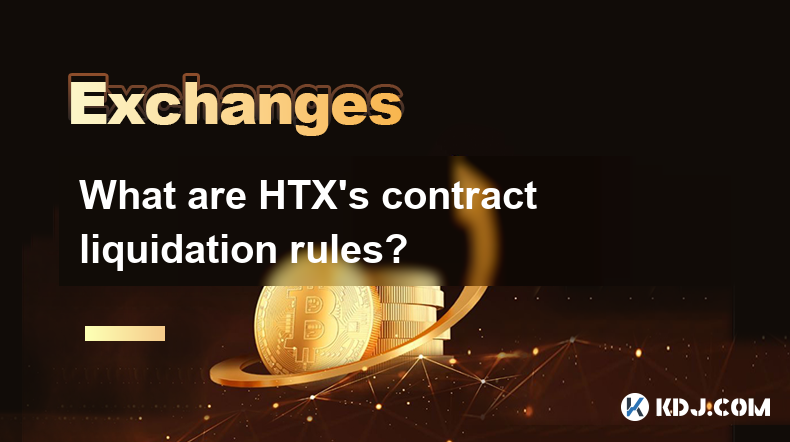
What are HTX's contract liquidation rules?
Apr 04,2025 at 10:08am
Introduction to HTX's Contract LiquidationsHTX, formerly known as Huobi, is a prominent cryptocurrency exchange known for its diverse range of trading products, including futures and options contracts. One of the critical aspects of trading on HTX is understanding the rules surrounding contract liquidations. Liquidation occurs when a trader's position i...
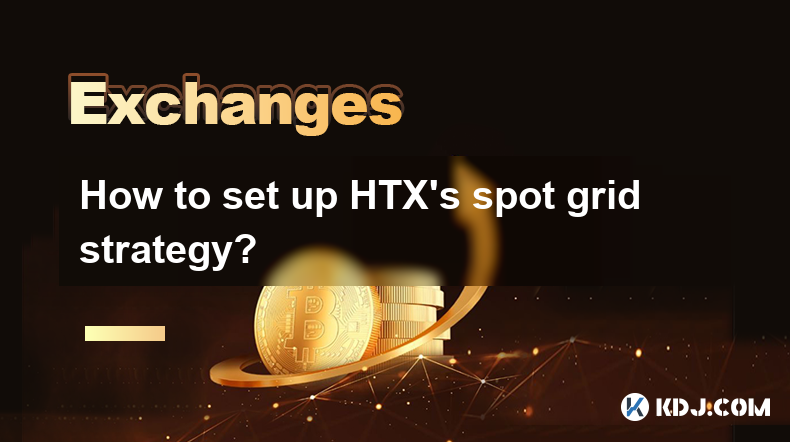
How to set up HTX's spot grid strategy?
Apr 05,2025 at 12:35am
Setting up HTX's spot grid strategy involves a series of steps that allow traders to automate their trading activities based on predefined parameters. This strategy is particularly useful for those looking to capitalize on the volatility of the cryptocurrency market without constantly monitoring their trades. In this article, we will walk you through th...

What are the contract margin modes of HTX?
Apr 04,2025 at 02:14pm
HTX, formerly known as Huobi, offers various contract margin modes to cater to the diverse needs of traders. Understanding these modes is crucial for effectively managing risk and maximizing potential returns. In this article, we will delve into the different contract margin modes available on HTX, explaining their features, benefits, and how to use the...

How to transfer HTX's account assets?
Apr 04,2025 at 09:28pm
Introduction to HTX and Account AssetsHTX, formerly known as Huobi, is a leading cryptocurrency exchange that offers a wide range of trading services. One of the essential functions for users is the ability to transfer assets within their HTX accounts. Whether you're moving funds between different wallets or sending assets to another user, understanding...

What order types are supported by HTX's spot trading?
Apr 04,2025 at 04:42am
HTX, formerly known as Huobi, is a well-established cryptocurrency exchange that offers a variety of order types for spot trading. Understanding these order types is crucial for traders looking to execute their strategies effectively. In this article, we will explore the different order types supported by HTX's spot trading platform, providing detailed ...

How to cancel HTX's stop-profit and stop-loss orders?
Apr 03,2025 at 07:50pm
Introduction to HTX's Stop-Profit and Stop-Loss OrdersHTX, formerly known as Huobi, is a leading cryptocurrency exchange that offers a variety of trading tools to its users. Among these tools are stop-profit and stop-loss orders, which are essential for managing risk and securing profits in the volatile crypto market. These orders allow traders to set p...

What are HTX's contract liquidation rules?
Apr 04,2025 at 10:08am
Introduction to HTX's Contract LiquidationsHTX, formerly known as Huobi, is a prominent cryptocurrency exchange known for its diverse range of trading products, including futures and options contracts. One of the critical aspects of trading on HTX is understanding the rules surrounding contract liquidations. Liquidation occurs when a trader's position i...

How to set up HTX's spot grid strategy?
Apr 05,2025 at 12:35am
Setting up HTX's spot grid strategy involves a series of steps that allow traders to automate their trading activities based on predefined parameters. This strategy is particularly useful for those looking to capitalize on the volatility of the cryptocurrency market without constantly monitoring their trades. In this article, we will walk you through th...
See all articles




















































































